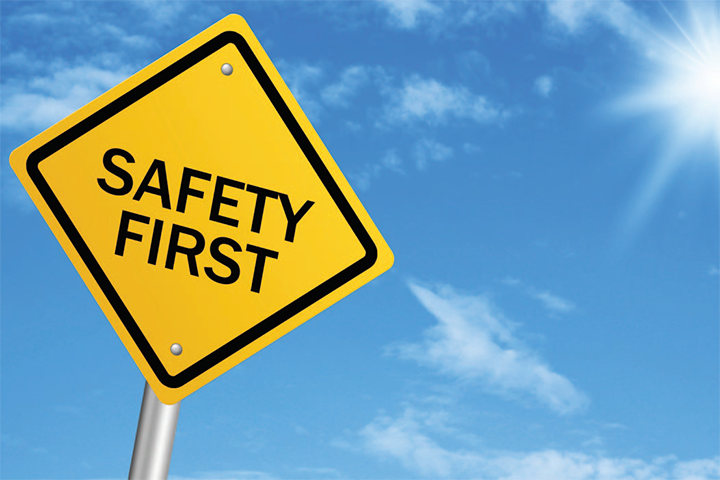The right tools—and support from your organization—will protect you and your patients.
Takeaways:
- Nurses and other healthcare workers are harmed by violent patients and family members and need to be safe in practice.
- Many nurses believe workplace violence is part of the job.
- Learning and practicing de-escalation techniques can help protect nurses and patients.
Violence continues to be a problem in healthcare settings. (See Workplace violence stats.) Too many nurses continue to believe that workplace violence is part of the job, so they don’t ask for help when they’re in a combative situation with a patient or family member, and they don’t notify their supervisors of an injury. However, the American Nurses Association (ANA) position statement on Incivility, Bullying, and Workplace Violence states that “all registered nurses and employers in all settings, including practice, academia, and research must collaborate to create a culture of respect, free of incivility, bullying, and workplace violence.” In other words, violence should never be an accepted part of practice.
Workplace violence stats
Violence is an issue in many workplace settings, including healthcare.
- The U.S. Occupational Safety and Health Administration states that “… nearly 2 million American workers report having been victims of workplace violence each year.”
- According to data from ANA Enterprise’s Healthy Nurse, Healthy Nation™ survey, more than a quarter (29%) of respondents have been verbally and/or physically threatened by a patient or family member in the past year, and 10% have been assaulted by a patient or family member while at work.
- The World Health Organization notes that between 8% and 38% of health workers around the world suffer physical violence at some point in their careers.
But when you do encounter combative patients or family members, what should you do? First, remember that they’re in a stressful situation and may act out for many reasons, including a medical diagnosis, drug misuse withdrawal, medication effects, mental health issues, or financial anxiety. Quickly building rapport with the patient and using proven verbal de-escalation tools can help you prevent a tense situation from becoming violent.
Verbal de-escalation tools
Verbal de-escalation involves communicating effectively, offering clear explanations for protocols and procedures, checking your own behavior to make sure you’re not contributing to the tension, and offering the patient realistic options. However, if you’re ever in a situation where you’re not sure what to do, ask for help from fellow staff members or your organization’s safety and security staff. (See Verbal de-escalation tips.)
Verbal de-escalation tips
Keep these tips in mind whenever you encounter a combative patient or family member.
- Take a deep breath.
- Have a planned escape route from the room.
- Stay at least two arms’ length away from the person escalating and don’t turn your back on him or her.
- Keep your expression and posture relaxed and don’t use too many gestures.
- Stay at eye level with the patient.
- Maintain a calm expression and voice.
- Keep your hands where the patient can see them.
- Designate one primary person to communicate with the patient.
- Restate what the patient says so they know he or she has been heard and to be sure you understand the issues. “Tell me if I have this correct….”
- Don’t threaten but do set boundaries. “I understand you’re frustrated with not being able to go home today; however, it’s important that you do not yell at staff.”
- Don’t use jargon. Speak in short sentences.
- Empathize with feelings and be nonjudgmental.
- Try to understand the reason for the escalating behavior.
- Offer the patient realistic choices when possible.
- Use the person’s name and suggest you both sit. Alternatively, if possible, walk and talk with the patient to help relieve stress.
- Be OK with silence; sometimes it gives people time to realize the difficulty their behavior is causing.
- Don’t argue but do point out consequences of the behavior.
- Be respectful, but don’t answer rude questions.
- Don’t hesitate to get help. Keep yourself safe.
Communicate effectively
Listen carefully to what the patient or family member is saying. They might not be able to express their actual needs, so look for a theme while assessing the situation, listen to what is and isn’t being expressed, and determine what their body language is telling you.Don’t raise your voice, which may only anger the patient and cause him or her to speak even more loudly. Statements such as “I’m here to keep you safe” can be beneficial. Remind the patient (and yourself) that you’re on the same team and should be working together. Don’t get caught up in an “us versus them” dynamic. Treat the patient as an important member of the healthcare team.
Offer explanations
Many patients and family members won’t understand what staff members are doing or why. When you’re questioned by a patient or family member, don’t just state that “it’s policy”; provide a clear rationale. When you’re sure they understand, you can talk about options to meet the patient’s needs that are in line with your organization’s policies.
Be realistic
When offering the patient choices and suggestions to resolve a situation, be realistic. Determine what the patient has control over, what feasible choices are available, and how immediate his or her needs are. Offering an unrealistic option simply to appease the patient may backfire and result in lost trust. If possible, walk with the patient while discussing options. Moving may release stress and help calm the patient.
Check yourself
You can make a situation better or worse, so pay attention to your own behavior. Avoid anger, closed body language, and aggression. Instead, stay calm, keep a relaxed posture, and make eye contact. Keep your hands visible so that the patient doesn’t think you’re hiding something. Remember that having too many people in the room may overwhelm the patient; however, for safety, you may want at least one other staff member with you.
What would you do?
Almost all nurses encounter situations where a patient’s or family member’s behavior begins to escalate, presenting a potentially unsafe situation. These case scenarios offer suggestions for how to handle these situations.
Case scenario 1


Safety tips: Because this patient has a known risk factor for agitated behavior (alcohol withdrawal), take steps to prevent escalation. Before approaching the patient’s bed, introduce yourself, explain what you’ll be doing and why, and ask the patient if she has any questions. Also consider having a colleague with you, how you want to position yourself to administer the injection, and how you can exit quickly if necessary.
If the patient becomes agitated while you’re at the bedside, step back at least two arms’ lengths so that you’re not in hitting or kicking distance and don’t turn your back on the patient. Keep a relaxed posture, listen to what the patient is saying to assess her needs, and then explain calmly that you want to help. If necessary, call for assistance or leave the room to protect yourself.
Case scenario 2


Safety tips: When a situation is escalating, one person should be primarily responsible for talking with the patient. Too many people talking at once can be overwhelming to everyone. Typically, the patient’s nurse should be the primary communicator. However, if the patient is angry with the nurse, another person may need to take the lead role.
Avoid using medical jargon that the patient may not understand and don’t make ultimatums that may feel threatening. State your name and explain that staff are here to help. Actively listen to your patient to understand what he or she needs. Sometimes restating what the patient is saying can show that he or she is being heard and validated. Keep your communication short, calm, and clear.
*Names are fictitious.
Stay safe
Combative patients and family members can be intimidating, but with the right tools and support from your colleagues and safety and security personnel, you can keep yourself and others safe. And remember that violence at work is not part of the job. Collaborate with your organization to develop and implement de-escalation protocols that protect everyone.
Julia Mason Jubb is an associate professor in the RN to BSN Online Option at Chamberlain College of Nursing, Chamberlain University. Cathryn J. Baack is an assistant professor and program director for the DNP program family nurse practitioner track at Leighton School of Nursing, Marian University, in Indianapolis, Indiana.
Selected References
Adams J, Roddy A, Knowles A, Ashworth J, Irons G. Assessing the effectiveness of clinical education to reduce the frequency and recurrence of workplace violence. Aust J Adv Nurs.2017;34(3):6-15.
American Nurses Association. Violence, incivility, & bullying. nursingworld.org/Bullying-Workplace-Violence
Locke L, Bromley G, Federspiel KA. Patient violence: It’s not all in a day’s work. Am Nurs Today. 2018;13(5):10-3.
Moylan LB, Cullinan MB, Kimpel JE. Differences in male and female nurses’ responses to physical assault by psychiatric patients: A supplemental finding of a mixed-methods study. J Psychosoc Nurs Ment Health Serv. 2014;52(12):36-42.
Occupational Safety and Health Administration (OSHA). Healthcare: Workplace violence. 2015. osha.gov/SLTC/healthcarefacilities/violence.html
Papa A, Venella J. Workplace violence in healthcare: Strategies for advocacy. Online J Issues Nurs. 2013;18(1). nursingworld.org/MainMenuCategories/ANAMarketplace/ANAPeriodicals/OJIN/TableofContents/Vol-18-2013/No1-Jan-2013/Workplace-Violence-Strategies-for-Advocacy.html
Richmond JS, Berlin JS, Fishkind AB, et al. Verbal de-escalation of the agitated patient: Consensus statement of the American Association for Emergency Psychiatry project BETA de-escalation workgroup. West J Emerg Med. 2012;13(1):17-25.
Workplace violence prevention: Screening for the early detection of risk of harm to self or others. The Joint Commission Perspectives. October 2017. jointcommission.org/assets/1/6/Oct2017PerspectivesArticle_WPVscreening.pdf
World Health Organization. Violence and injury prevention: Violence against health workers. who.int/violence_injury_prevention/violence/workplace
Van Wijk E, Traut A, Julie H. Environmental and nursing-staff factors contributing to aggressive and violent behaviour of patients in mental health facilities. Curationis. 2014;37(1):1122.


















